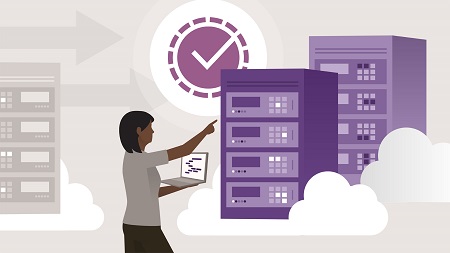
English | MP4 | AVC 1280×720 | AAC 44KHz 2ch | 3h 59m | 612 MB
Building out a resilient application takes knowledge, effort, and the right toolset. Businesses increasingly turn to cloud-based platforms like Amazon Web Services for access to modern, scalable solutions, including compute, database, and storage options. This course covers basic high availability (HA) concepts as well as practical techniques for setting up a strong and highly available environment for your real-world applications in AWS. Follow along with instructor Sharif Nijim as he explains how to create highly available DNS routes in Route 53; distribute workloads across resources with Amazon Machine Images, the Application and Network Load Balancers, and AWS Auto Scaling; and build out a highly available database with Dynamic DB, RDS, Neptune, and ElastiCache. Plus, learn about the high availability storage options such as S3, Elastic Block Storage (EBS), Elastic File System, and FSx.
Topics include:
- What is high availability?
- Designing for failure
- Routing with Route 53
- Working with Amazon Machine Images
- Setting up load balancing
- Combining Auto Scaling and load balancing
- Creating an RDS database
- Creating a highly available graph database
- Exploring ElastiCache for Redis and Amazon Keyspaces
- Setting up Elastic File System for HA storage
Table of Contents
Introduction
1 AWS and high availability
2 What you should know
3 Command Line Interface (CLI) for Mac
4 Command Line Interface (CLI) for Windows
Foundations of High Availability
5 Reviewing high-availability concepts
6 Designing for failure
7 Understanding fault-tolerant components
8 Exploring high availability in Route 53
9 Creating a health check in Route 53
10 Understanding advanced HA options in Route 53
11 Understanding Elastic IP addresses
Compute Tools for High Availability
12 Understanding EBS snapshots
13 Understanding Amazon Machine Images (AMI)
14 Exploring Amazon Machine Images
15 Understanding load balancing options
16 Understanding load balancing features
17 Creating a target group
18 Creating an application load balancer
19 Testing an application load balancer
20 Understanding Auto Scaling
21 Creating a launch configuration
22 Creating a launch template
23 Creating an Auto Scaling group
24 Staying alive with Auto Scaling
25 Understanding scaling policies
26 Implementing step scaling
27 Challenge Scale-in policy
28 Solution Scale-in policy
29 Combining autoscaling and load balancing
30 Testing autoscaling with load balancing
31 Decoupling tools
Highly Available Database Options
32 Understanding DynamoDB
33 Creating a global DynamoDB table
34 Improving relational database availability
35 Creating an RDS subnet group
36 Creating an RDS database
37 Adding high availability to RDS
38 Simulating RDS failover
39 Understanding Amazon Neptune
40 Creating a highly available graph database
41 Understanding ElastiCache for Memcached
42 Challenge Create ElastiCache subnet
43 Solution Create ElastiCache subnet
44 Creating an ElastiCache Memcached cluster
45 Explore ElastiCache Memcached
46 Understanding ElastiCache for Redis
47 Creating an ElastiCache for Redis cluster
48 Exploring ElastiCache for Redis
49 Exploring Amazon Keyspaces
Highly Available Storage Options
50 Understanding S3
51 Understanding EBS
52 Understanding Elastic File System
53 Creating Elastic File System
54 Exploring Elastic File System
55 Understanding Amazon FSx
Conclusion
56 Next steps
Resolve the captcha to access the links!